#psychic surya
Text

#psychic surya#bestpsychichealers#psychic reading#fortune teller in birmingham#black art#get love back in london#Love Spells in London
0 notes
Text
Planets and their significations :
🌞 Sun - Surya represents the Atman , the soul , inner man , self confidence, fame , father ,creativity , charm , intiative , shine , personality.
🌝Moon - Chandra represents the Manas , the mind , the astral body , emotions ,feelings , thought process , mother , a collection of past lives experiences , built up traits , happiness, unconscious mind .
🌿Mercury - Buddha represents the thinking process , intelligence communication skills , analytical accounting skills , business mindedness , trade , friends , siblings , duality .
⭐Jupiter - Brihaspati represents wisdom, luck , kindness ,generosity , religious tendencies , ideologies , worship , Fortune , husband , children , Guru , external forms of worship.
💪 Mars - Mangal represents courage , action, will power, physical strength, assertiveness , boldness , warrior , champion spirit , fire , brothers , boyfriends .
💗 Venus - Shukra represents Maya , illusion of the created universe. Beauty , pleasure, affection, clothes , class , perfumes , self love , money , love relationships , art , music , literature, love , devotion , sisters , sensuality , balance , harmony, wife addictions too.
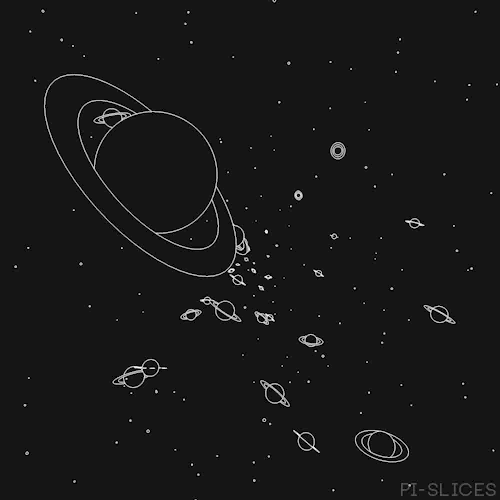
🪐Saturn - Shani represents karma , payback , strictness, authority, discipline , restrictions , coldness , fear, duty , responsibility, a sense of maturity , cronos , time , lessons , boss, growing up , old age , old people.
☘️ North Node & South node : Rahu & ketu represent the psychic inner pull and push between desires and apathy of the soul. This inner war happens on a deep psychological unconscious level which subtly yet deeply influences the personality.
#astrology#vedicwisdom#vedic horoscope#vedic astrology#vedic astro observations#vedic astro notes#counseling#sun signs#astrology community#astro notes#astrology blog#vedic#astro observations#planets#life#astrology observations#western astrology#healing
130 notes
·
View notes
Text

“Learning how to love is the goal and the purpose of spiritual life—not learning how to develop psychic powers, not learning how to bow, chant, do yoga, or even meditate, but learning to love.”
~Lama Surya Das
394 notes
·
View notes
Quote
Learning how to love is the goal and the purpose of spiritual life—not learning how to develop psychic powers, not learning how to bow, chant, do yoga, or even meditate, but learning to love.
Lama Surya Das
142 notes
·
View notes
Text
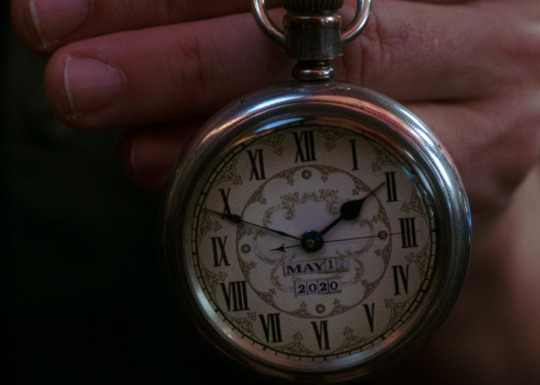


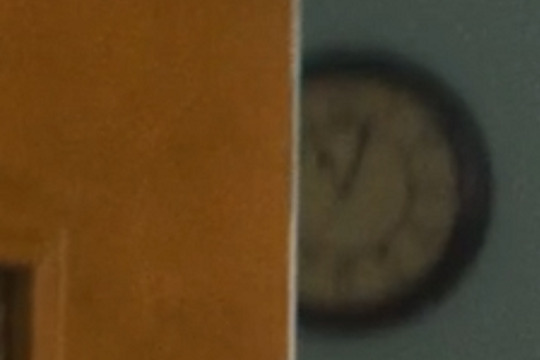

not what i set out to finish, got a bit distracted on other meta ends, but too good to leave sitting in drafts
and no just in case you think that's when they set all their clocks, or it was actual time, no and no. there was a lot of interesting clockwork in 15.01 to begin with, I just tagged my stuff back then poorly

In Manipura and below, man is bound by the laws of karma and fate. In Anahata one makes decisions ("follows one's heart") based on one's higher self, not the unfulfilled emotions and desires of lower nature. As such, it is known as the heart chakra.
It is also associated with love and compassion, charity to others and psychic healing. Meditation on this chakra is said to bring about the following siddhis (abilities): he becomes a lord of speech, he is dear to women, his presence controls the senses of others, and he can leave and enter the body at will.
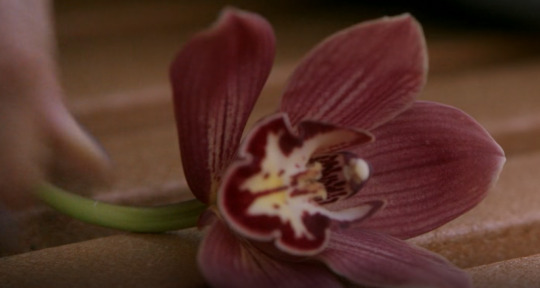



Anahata (Sanskrit: अनाहत, IAST: Anāhata, English: "unstruck") or heart chakra is the fourth primary chakra, according to Hindu Yogic, Shakta and Buddhist Tantric traditions. In Sanskrit, anahata means "unhurt, unstruck, and unbeaten". Anahata Nad refers to the Vedic concept of unstruck sound (the sound of the celestial realm). Anahata is associated with balance, calmness, and serenity.
The name of this chakra signifies the state of freshness that appears when we are able to become detached and to look at the different and apparently contradictory experiences of life with a state of openness (expansion).
Normally we are not used to the effect produced by the confrontation of the two opposite forces. At the level of Anahata chakra appears the possibility to integrate the two opposite forces and obtain the effect (sound, in this case), without the two forces being confronted (without touching of the two parts).
This energy is specific to cooperation and integration, which brings peace and a new perspective in a world which, up to this level (considering only the energies specific to the first three centres of force: Muladhara, Swasdhistana and Manipura) was made only of a more or less conscious confrontation between opposite forces. The name Anahata suggests, in fact, the synergetic effect of the interaction of energies at this level.
Anahata is considered to be a tiny flame inside the heart. associated with the ability to make decisions outside the realm of karma.

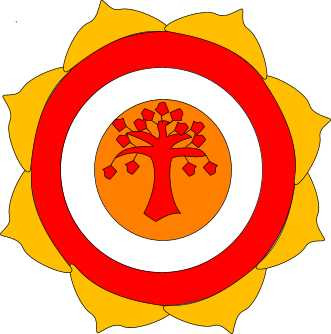
Hrit (Hridaya, Surya) chakra
Tree inside two circles inside a lotus flower
The Hrit chakra (just below Anahata) is the seat of the wish-fulfilling tree.
Immediately below Anahata (at the solar plexus or, sometimes, on the near left side of the body) is a minor chakra known as Hrit (or Hridaya, "heart"), with eight petals.
It has three regions:
a vermilion sun region,
within which is a white moon region,
within which is a deep-red fire region.
Within this is the red wish-fulfilling tree, kalpavriksha, which symbolises the ability to manifest what one wishes to happen in the world.
The heart wheel in Tibetan Buddhism is the location of the indestructible red-and-white drop. At death, the winds of the body dissolve and enter this drop, which then leads the body into Bardo (the intermediate stage) and rebirth. The heart wheel in this model is circular, white and has eight petals (or channels) reaching downwards.
These channels divide into three wheels (mind, speech and body)


The heart wheel is important in meditation; in the lower tantras, the mantra is recited from the heart. It is recited verbally and then mentally;
then, in the heart, a tiny moon disc and flame are imagined from which the mantra rings.
In the higher tantras (the Anuttarayoga Tantra of the Sarma schools) or the Inner Tantras of the Nyingma school, the practitioner attempts to dissolve the winds and drops into the central channel at the level of the heart to experience the Yoga of Clear Light.
#time#watch#swiss watch#spnwin#1x2#1x4#15x15#15x09#15x01#15x20#15x17#1x7#meta#blossom#akrida#arcadia#garden#queen bee
98 notes
·
View notes
Text
IMPACT OF EXALTED SUN IN 12TH HOUSE OF VEDIC HOROSCOPE
The placement of the Sun in the 12th house of a Vedic horoscope is considered significant and can have a significant impact on the individual's life. The Sun is a powerful planet that represents the individual's self, ego, and vitality.
The 12th house represents loss, expenses, isolation, and detachment. The impact of the sun positioned in 12th house will depend on its significance as per that horoscope and it will vary from person to person as per their horoscope.
Therefore, the Sun's placement in the 12th house can cause various effects, both positive and negative.
First, let us understand the basic characteristics of the Sun and the 12th house.
The Sun in Vedic astrology is known as Surya and is considered a royal planet. It represents authority, self-confidence, leadership, and creativity. It is also the source of life and vitality. The Sun governs the sign of Leo and the 5th house of the Vedic horoscope.
On the other hand, the 12th house is considered the house of losses, expenses, isolation, and detachment. It represents the subconscious, hidden enemies, spirituality, and the subconscious mind. It is also associated with foreign travels and settlement, as well as imprisonment and hospitalization.
NOW LET US SEE HOW THE SUN'S PLACEMENT IN THE 12TH HOUSE CAN IMPACT AN INDIVIDUAL'S LIFE.
POSITIVE IMPACTS OF SUN EXALTED IN 12TH HOUSE :
Spiritual Development: The 12th house is associated with spirituality, and the Sun represents the individual's soul. The placement of the Sun in the 12th house can make the person more inclined towards spiritual practices, leading to significant spiritual growth.
Creativity and Imagination: The 12th house is associated with imagination, and the Sun is the planet of creativity. The combination of these two can lead to a surge in the individual's creativity and imagination, leading to artistic pursuits.
Foreign Settlements: The 12th house is associated with foreign travels and settlements, and the Sun represents authority and leadership. The combination of these two can lead to success in foreign lands, especially in leadership roles.
Charitable Work: The 12th house is associated with charity and selfless service, and the Sun represents self-confidence and leadership. The combination of these two can lead to success in charitable work, especially in leadership roles.
Intuition and Psychic Abilities: The 12th house is associated with the subconscious mind, and the Sun represents the soul. The placement of the Sun in the 12th house can enhance the individual's intuition and psychic abilities, leading to a better understanding of their subconscious mind.
NEGATIVE IMPACTS OF SUN EXALTED IN 12TH HOUSE :
Financial Losses: The 12th house is associated with losses and expenses, and the Sun represents vitality and energy. The placement of the Sun in the 12th house can lead to financial losses and expenses, especially related to foreign lands.
Isolation and Loneliness: The 12th house is associated with isolation and detachment, and the Sun represents the individual's self. The placement of the Sun in the 12th house can lead to isolation and loneliness, especially due to the individual's strong self-identity.
Imprisonment and Hospitalization: The 12th house is associated with imprisonment and hospitalization, and the Sun represents vitality and energy. The placement of the Sun in the 12th house can lead to hospitalization or imprisonment, especially related to foreign lands.
Hidden Enemies: The 12th house is associated with hidden enemies, and the Sun represents the individual's self. The placement of the Sun in the 12th house can lead to hidden enemies or sabotage from others, especially related to financial matters or foreign travels.
Self-Doubt and Lack of Confidence: The 12th house is associated with the subconscious mind, and the Sun represents self-confidence and ego. The placement of the Sun in the 12th house can lead to self-doubt and lack of confidence, especially related to the individual's subconscious mind and spiritual beliefs.
In conclusion, the placement of the Sun in the 12th house of a Vedic horoscope can have various impacts, both positive and negative. While the positive impacts can lead to spiritual growth, creativity, and success in foreign lands, the negative impacts can lead to financial losses, isolation, and self-doubt.
NOTE : IN VEDIC HOROSCOPE, WHERE EVER THE SUN IS POSITIONED IN THAT HOROSCOPE, THE NATIVE WILL HAVE HIS FULL FOCUS ON THAT HOUSE ACTIVITIES MORE THAN OTHER HOUSES IN HIS LIFE.
The nature of the activities will keep on changing as per the age of the native and understandings.

#exalted sun effects astrology#sun in 12th house astrology#sun astrology#exalted sun astrology#exalted sun horoscope#astrology#horoscope posts#horoscope readings#horoscopes#horoscope#vedicastrology#astrologer#vedic astrology#horoscope analysis#vedic astrologer#dailyhoroscope#daily astrology
4 notes
·
View notes
Text

“The goal and purpose of spiritual life – not learning how to develop psychic powers, not learning how to bow, chant, do yoga, or even meditate but learning to love. Love is the truth. Love is the Light.
The essence of every human being is love. The core of the self is pure, divine, ‘connected to everything’ love. It is the indestructible ‘god particle’ that is tucked away within us that is with us from the moment we are born and before. It is the spiritual thread that joins us to the vastness and oneness of Universal Love.”
- Lama Surya Das (source)
#love#energy#light#spiritual evolution#consciousness#awakening#attunement#soulpath#7 cosmic grades#earth school#learning#feeling#thinking#acting#truth#greater reality#soul#spark#oneness#eternal life#source
3 notes
·
View notes
Text
How to choose the top yoga school in India

The oldest reference to the term yoga in ancient Indian treatises can be found in the Katha Upanishad, where there is a reference to controlling the senses. Besides the Upanishads, there are numerous references to yoga in the Bhagvad Gita, which was written around the same period as the Upanishads (500 B.C). A more detailed understanding of yoga can be found in The Yoga Sutras, which were written by Patanjali around 100–200 B.C. These texts help one understand the evolving concept of yoga. Patanjali’s writing also became the basis for a system referred to as ‘Ashtanga Yoga’ (eight-limbed yoga) as we know it today. Yoga is one of India’s greatest gifts to the world. Shalini Parekh, a yoga expert from a top yoga school in India, says it is essentially an integration of physical and mental exercises designed to balance the mind, body, and spirit. “Yoga is a combination of various asanas or physical postures, breathing exercises and meditation.”
In India, yoga was propagated more as a spiritual practice and a way of life; however the West has embraced it more as a physical exercise, though in recent times the spiritual aspect is also gaining popularity. With time yoga has evolved and been interpreted in various ways. The interpretation has led to the formation of many schools. One of the forms is Raja yoga or Ashtanga yoga (Patanjali yoga), focusing on the analysis and control of the field of human Consciousness. Astanga Vinyasa yoga, different from Patanjali’s Ashtanga, can trace its origins to the Yoga Korunta texts compiled by Vamam Rishi, and was developed by K. Pattabhi Jois in modern times. Astanga Vinyasa yoga is an aerobic, muscle-shaping, physically demanding workout. Hatha yoga another popular form, especially in the West, was developed by Yogi Swatmaram, a 15th century sage.
Hatha yoga tries to balance mind and body via physical postures or asanas, purification practices, controlled breathing, and the calming of the mind through meditation. Kundalini yoga, which concentrates on psychic centres or chakras in the body to generate energy, is also widely practised. There are other forms like the Yoga School India, which is an offshoot of Hatha yoga and concentrates on holding postures for a long time.
The heart of any yoga practice is the performance of the asanas, each of which has specific physical and mental benefits. Surya Namaskar or sun salutation, which is a series of twelve asanas is by far the most popular asana that most yoga practitioners perform. Sonal Ahuja, yoga instructor at Clay, a yoga teacher training in India says that yoga asanas help to ensure an even distribution of bio-energy, or life- force, which calms the current state of mind. “A practitioner of yoga faces life not as a victim, but as a master, who is in control of his or her life situation. Asanas balance the respiratory, digestive, excretory and reproductive systems perfectly. The equilibrium in the body then brings mental peace and enhances intellectual clarity. “ Yoga can also work as a form of alternative medicine as plenty of practitioners believe that it can prevent a number of diseases and maladies. Regular practice can help diverse ailments such as diabetes, blood pressure, digestive disorders, chronic fatigue, arthritis and asthma. Whether you want your body to be fit or you want to get rid of stress, yoga can provide solutions for all your problems.
0 notes
Text

Know Path To Success Through Psychic Reading In Los Angeles
A psychic reading can help you to get an interpretation of your future. Master Surya is a famous astrologer known for his psychic reading in Los Angeles service. Through his psychic abilities, he will connect with your mind to know your fate. He will also tell you the right path to achieve success. Master Surya can also help you with your life decisions through his astrology in Los Angeles. He will assist you to get a better understanding of your destiny. Call him at +1 562-669-6498 or visit 11421 186th St Apt#131, Artesia, CA 90701, United States.
0 notes
Text
Astrology in the 21st Century

Very best astrological chart? It is snapshots of specific segments associated with your in our life - past, present or future. The science for Astrology is presently and clearly influenced by the reality of an increased momentum of time resulting from the intensity belonging to the technological age we live in. The astrologer must be in the position to clearly capture and analyze these segments of time for one's complete lifetime. Then they can assuredly help somebody to clarify the life goals and path in relation to one's show or future aspirations while in a body on the earthly plane.
Astrology has now evolved, beginning at the end of last one particular hundred year, into the science of karmic evolution. The astrologer so must remain up to date and educated using the most modern and takes steps on astronomical mathematics and zodiac, as not to mislead many others, even unintentionally. In order to do this, the most authentic and correct Zodiac should be employed. As indicated by revelations within the SURYA SIDHANTA, VEDANGA JYOTISHA, YAVANA JATAKA, SRIMAD BHAGAVATAM, in addition to PARASURA HORA SASTRA, and with the help of modern astronomy, a number of modern Vedic psychic reading near me presently use the Tropical Zodiac beside an effective Sidereal Ayanamsa. This need be employed for thorough finely-detailed. Complete Sidereal calculations (used by most Indian/Vedic astrologers today) is not necessarily reflecting true Vedic Astrology. Obtained correct mathematically about 2600 years ago. However , due to the Cortège of the Equinox, the results have changed, but are hardly thought about, especially in India and by other Western Vedic astrologers. Also today, there is actually an ongoing and sometimes heated debate concerning Sidereal and Tropical astrologers.
Contemporary Master Vedic Astrologers of the 21st century, after extensive research and knowledge, are now using the Tropical Zodiac along with the Sidereal Ayanamsa, that had been the original intention of the ancient Vedic masters, such as Parasura Muni. Research and practice has also been accomplished with Ayanamsa calculations by leading Vedic astrologers of the 20th a single. Sri Yukteshvara (Sri Yogananda's guru), one of the most respected Vedic astrologers of his time, tried to present and reintroduce, reimpose, re-enforce, reconstitute the corrected Zodiacal astronomical calculations (using Tropical Zodiac including Sidereal Ayanamsa) to the Indian government but neglected in his attempts, due to politics and resistance from other Of india astrologers not willing to admit past miscalculations or modification their techniques.
Intelligent, open-minded and courageous Vedic Astrologers presently use the Tropical Zodiac with the Vedic system of which is, as well as an effectively researched sidereal Ayanamsa and Family home system. Unfortunately for many adherents, students and clients about Sidereal Vedic astrology, out of date practices result in many goof ups and much lower success rate in predictions, due to wanting calculated charts. An astrologer, in this age, using only appropriate mathematical and latest astronomical calculations, including advanced plus ancient Vedic astrological techniques, meant to correctly capture and even analyze important segments of time, (past, present and future). Only then is the astrologer qualified to examine the astrology realm and excise precise knowledge of events and charm. Because our life is so precious we should not acknowledge anything less than the best and correct. Open and educated astrologers stay on the cutting edge of knowledge in order to accurately work with the astrological realms of the cosmos. Therefore they are able to accurately detail how the astral bodies function to reveal the life force within the individual seen through the horoscope.
The chart is 1st nothing less than the karmas we brought into this everyday living at the time of our birth. An astrologer's job is not only to disclose psychological attributes and patterns from these karmas, together with based on these facts explore one's life path (love, partnership, career, etc . ). The chart then will be able to act as a guide and make predictions possible. However , most importantly, on the astrological process, the chart creates an awareness of our valid purpose on earth and reveals the karmas aiding or possibly obscuring our relationship with the Universe and ultimately our bliss, even on earth. This astral knowledge can be procured in who is linked to that Source through the intensity of their religious practices. Therefore the astrologer must be not only adept in their zodiac knowledge must most importantly, through revelations from chart, be an aid to guide the consciousness of the individual toward spiritual liberation.
1 note
·
View note
Text
the mythology of rahu and ketu 🐉:

i am about to take a deep dive into the lunar and nodal nakshatras so i thought this would be the perfect post to prelude my upcoming explorations of the nakshatras of chandra, rahu, and ketu!

✨rahu depicted above:
🌑 for those who are new to vedic astrology, ketu and rahu are the shadow planets of the moon. they are what many tropical astrologers refer to as the south node (ketu) and north node (rahu). except, in vedic astrology, they have more intricate and prevalent meanings. rahu’s ruling deity is often said to be the goddess durga and ketu’s ruling deity is said to be lord ganesha.

✨ketu depicted above:
🐉 rahu means “to abandon” or “void”. rahu is the prince of the daityas (the offspring of the goddess diti and kasyapa, they are giant spirits who fought against the devas out of jealousy towards their deva half-brothers). rahu was born the son of viprachitta and sinhika. whereas, ketu means a “sign” or “banner” and is the son of viprachitta and sinhika, as rahu and ketu are two sides of the same coin (they are two imaginary planets, of the same origin, that can only be evaluated when both are taken into account).
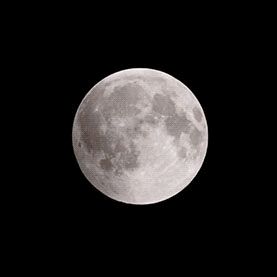
🌌 the solar system takes approximately 365 days for the earth to orbit the sun and approximately 28 days for the moon to orbit the earth. twice a year, the lunar and solar paths intersect to create solar and lunar eclipses. during these eclipses, the sun/moon is enshrouded by the darkness of one of the nodes. as discussed previously, rahu is the ascending node and ketu is the descending node. they will always be retrograde (as the nodes move backwards) and opposite of each other.
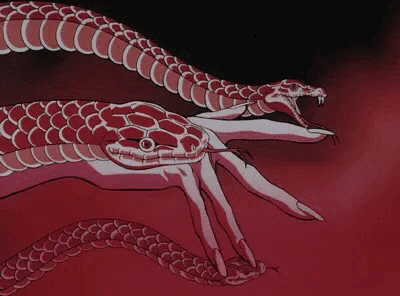
🌠 the story of rahu and ketu’s origin lies in the puranic texts (whose date of origin is said to be of the time before creation). after a deeply strenuous and violent war, the gods and demons decided to work together to churn the galactic material (milk ocean). this material is called amrita, the nectar of immortality, which was created out of the intent for the gods’ use alone. the snake demon, who sat between the thrones of surya and chandra, sneakily took a sip of amrita. lord vishnu, the sustainer of the universe, almost immediately be-headed him. this is why rahu is said to be the head of the serpent demon without a body and ketu is the tail without a head. due to rahu taking a sip of amrita, they are now immortal. lord vishnu placed rahu and ketu in two specific points in the sky. they are now only visible when eclipsing the sun and moon.
here’s a link to another version of the story:
https://www.astrology-prophets.com/rahu-and-ketu-in-astrology.php
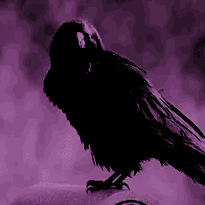
✨ you will notice that ketu is depicted as sitting on the crow. the mahavidya correlated to ketu, dhumavati (one of the ten tantric goddesses), is also symbolized by the crow. the crow is said to be symbolized by the tamasic shani too. this is why feeding crows is considered to be a remedy for an afflicted rahu, ketu, or shani! crows are also fed as part of shradh, a hindu ritual, which is an annual ritual conducted on the thithi, anniversary, of a person’s death. after someone dies, annually the deceased person’s family prepares a feast consisting of their relative’s favorite dishes. they then take turns to serve the dishes on a banana leaf, then the leaf is placed outside. the relatives call out to the crows to invite them to participate in the feast. once a crow begins to eat from the leaf, it is assumed that the deceased person (now in the form of the crow) has eaten, and the ritual is successfully finished. as this action indicates that the deceased ancestor’s soul is now appeased. crows can also be fed on amavasya days, as our dead ancestors are said to supposedly visit us on those days.
💫 ketu represents our karma, whether it is both good or bad. he represents spirituality and supernatural influences. ketu signifies the refinement of the spiritual process of materialization into the spirit. ketu is considered to be malefic, but not as malefic as the fierce, strong rahu who drank the nectar of immortality. this is why ketu is said to be submissive and cannot aspect other planets like rahu, because ketu is an uncontrollable and fluid being. he represents sorrow and loss and, therefore, is responsible for our journey to seeking a higher power. he will cause material loss for the purpose of bestowing the native with a more fitting spiritual outlook. ketu is also the karaka intelligence, wisdom, non-attachment, fantasy, insight, and psychic abilities. because ketu is not vain and is spiritually rich, he brings prosperity to the devotee's family and is said to remove the effects of venoms and poisons. if you devote yourself to him, he grants good health, wealth and livestock to his devotees.
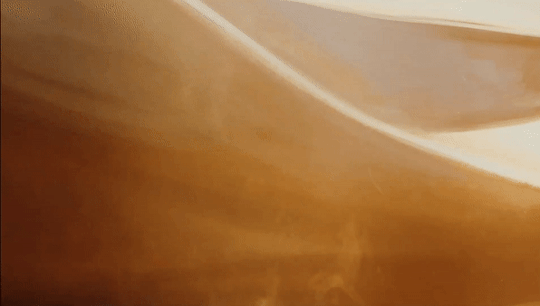
⭕️ rahu represents materialism, mischief, fear, dissatisfaction, obsession and confusion. the illusionary and deceitful nature of rahu is also why it is associated with politicians and occult sciences. interestingly enough, rahu is even mentioned in a pair of scriptures from the samyutta nikaya of the pali canon. in the candima sutta and the suriya sutta, rahu attacks surya and chandra. he is then compelled to release them by buddha. buddha instructs rahu to release surya and chandra, the alternative being to have rahu’s head being split into seven pieces. rahu proceeds to release them. the verses spoken by surya, chandra, and buddha in this passage are also recited by monks as prayers of protection. this could be why rahu is said to be friends with buddha, because buddha was one of the few deities who could adequately tame the malefic energies of rahu.

♟each planet is an expression of our own divine consciousness. the nodes are a combination of the earth (body), surya (soul) and chandra (mind). this intense influence is why they are regarded as one of the most influential planets in our creative and illusionary expressions. rahu is insatiable, obsessive and does not know how to take no for an answer. ketu is intelligent, wise, non-attached, and ultimately our spiritual liberation. this is why the rahu/ketu axis tells one what they must do to attain moksha. think of ketu as the defensive king in chess who is limited in the steps he can take but wise in his pursuit. rahu is the offensive queen who has multiple possible routes to take and her power/strength can easily be abused.
you may want to examine the different vibrations and undertones of the songs below to better understand the dichotomy between the nodes:
ketu native: billie eilish
rahu native: ariana grande
xoxo, angel <3
312 notes
·
View notes
Text
#psychic surya#bestpsychichealers#psychic reading#get love back in london#fortune teller in birmingham
0 notes
Photo

“Learning how to LOVE is the goal and the purpose of spiritual life—not learning how to develop psychic powers, not learning how to bow, chant, do yoga, or even meditate, but learning to love. Love is the TRUTH. Love is the LIGHT.”
~ Lama Surya Das
Art by Lobsang Melendez Ahuanari
61 notes
·
View notes
Photo

Learning how to love is the goal and the purpose of spiritual life not learning how to develop psychic powers, not learning how to bow, chant, do yoga, or even meditate, but learning to love. Love is the truth. Love is the light.
Lama Surya Das
16 notes
·
View notes
Text

''Learning how to love is the goal and the purpose of spiritual life not learning how to develop psychic powers, not learning how to bow, chant, do yoga, or even meditate, but learning to love. Love is the truth. Love is the light.''
- Lama Surya Das
artwork by Greg Spalenka
11 notes
·
View notes
Text
Weekend Edition: Short Stories, Part 2
Here are more collections of short stories for you to enjoy when you finish your exams. See Here for You to learn how to check out materials from wherever you are.
And, of course, OCL wishes you the best of luck on your finals. You’ve got this!

In the Small Hours of the Night: An Anthology of Sudanese Short Stories including works by Aan Merdéka Permana, Absurditas Malka, Dadan Wahyudin, Déni A. Fajar, Déni A. Héndarsyah, Érwin Wahyudi, Fitria Puji Lestari, Héna Sumarni, Lugiena Dé, Mamat Sasmita, Mulyana Surya Atmaja, Nina Rahayu Nadéa, Usép Romli H.M., and Yus R. Ismail ; translated and with an introduction by C.W. Watson
In the Small Hours of the Night, a collection of 24 Sundanese short stories, is the first collection of its kind ever to be translated into English. The stories deal with a variety of subjects, ranging from everyday-politics where corruption is rife to stories of village life and the trials faced by villagers forced to confront the waves of modernization. There are also stories which deal with the significant historical events of the last seventy years and finally--as one might expect, since the Sundanese are known for the frankness with which they describe sexual attraction--there are also stories of love.
The Nose and Other Stories by Nikolai Gogol
The tales collected in The Nose and Other Stories are among the greatest achievements of world literature. They showcase Nikolai Gogol's vivid, haunting imagination: an encounter with evil in a darkened church, a downtrodden clerk who dreams only of a new overcoat, a nose that falls off a face and reappears around town on its own.
Contemporary Chinese Short-Short Stories: A Parallel Text
This book presents Chinese short-short stories in English and Chinese, integrating language learning with cultural studies for intermediate to advanced learners of Mandarin Chinese and students of contemporary Chinese literature. Each chapter begins with a critical introduction, followed by two or more stories in parallel Chinese and English texts; each story is followed by a vocabulary list, discussion questions, and a biography of the author. The chapters are organized around central concepts in Chinese culture such as li (ritual), ren (benevolence), mianzi (face/prestige), being filial, and the dynamics of yin and yang, as well as the themes of governance, identity, love, marriage, and change. The stories selected are short-shorts by important contemporary writers ranging from the most literary to everyday voices. Specifically designed for use in upper-level Chinese language courses, Contemporary Chinese Short-Short Stories: A Parallel Text offers students a window onto China today and pathways to its traditions and past as they gain language competence and critical cultural skills.
Other Moons: Vietnamese Short Stories of the American War and Its Aftermath
In this anthology, Vietnamese writers describe their experience of what they call the American War and its lasting legacy through the lens of their own vital artistic visions. A North Vietnamese soldier forms a bond with an abandoned puppy. Cousins find their lives upended by the revelation that their fathers fought on opposite sides of the war. Two lonely veterans in Hanoi meet years after the war has ended through a newspaper dating service. A psychic assists the search for the body of a long-vanished soldier. The father of a girl suffering from dioxin poisoning struggles with corrupt local officials. The twenty short stories collected in Other Moons range from the intensely personal to narratives that deal with larger questions of remembrance, trauma, and healing. By a diverse set of authors, including many veterans, they span styles from social realism to tales of the fantastic. Yet whether describing the effects of Agent Orange exposure or telling ghost stories, all speak to the unresolved legacy of a conflict that still haunts Vietnam. Among the most widely anthologized and popular pieces of short fiction about the war in Vietnam, these works appear here for the first time in English. Other Moons offers Anglophone audiences an unparalleled opportunity to experience how the Vietnamese think and write about the conflict that consumed their country from 1954 to 1975—a perspective still largely missing from American narratives.
#Oberlin College Libraries#Oberlin College#weekend edition#short stories#short story recommendations
5 notes
·
View notes